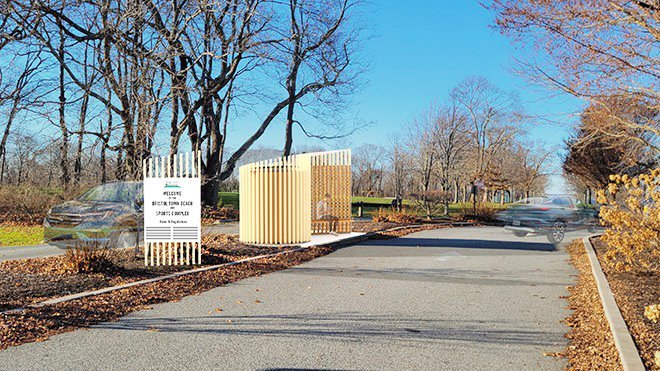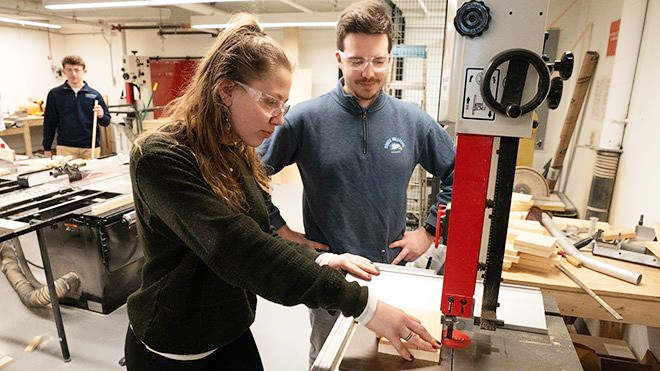RWU Architecture Students Win National Freedom by Design Award for Community Project
The Freedom by Design team at RWU transformed the Bristol Town Beach gatehouse, blending functionality with aesthetic appeal to elevate the community experience, with recognition from the American Institute of Architecture Students.

BRISTOL, R.I. – A team of Architecture students at Roger Williams University recently earned national recognition for their outstanding work on a community-based project, winning the prestigious Freedom by Design award from the American Institute of Architecture Students (AIAS). This award, which recognizes innovative and impactful projects designed by students, highlights the students’ ability to blend real-world experience with academic learning, while also benefiting the local community.
Their project was a new gatehouse at Bristol Town Beach. The existing ticket booth had become dilapidated after 15 years of use, and the students saw the opportunity to design and construct a replacement that would not only serve a functional purpose but also enhance the aesthetic and operational value of the beach.
“This project offered students the opportunity to experience all the aspects of a real project, from conception and design development to execution,” said Greg Laramie, Associate Dean of the Cummings School of Architecture. “The students encountered challenges such as delays with subcontractors and material shortages, which made it a truly eye-opening experience that gave them a deeper understanding of the complexities involved in bringing a design to life.”
Led by Dominic Cavallo, design director of RWU's Freedom by Design (FBD) chapter, the team of students took on this project as a hands-on learning experience that would test their skills and push their creative limits. Cavallo, a senior Architecture major with a minor in Sustainability Studies from Wethersfield, Conn., oversaw the entire process, from the conceptual design to the final touches on construction. Joining him on the project were Architecture students Ryan DeSanctis ’23, M’25, junior Olivia Horton, senior Dylan Steward, and James Vigar ’24, along with Construction Management students senior Daniel Fontana, senior Bryce Riccitelli, senior Danny Wilson, and senior Brendan Wyllie.

Under Cavallo's leadership, the team effectively collaborated with the Town of Bristol, local organizations, professors, and construction professionals to bring their vision to life.
“Winning the Freedom by Design award means a lot to our team. We were competing against top-tier schools like Yale, Michigan, and Harvard, so the recognition was unexpected but incredibly rewarding,” Cavallo said. “This national acknowledgment not only celebrates the hard work of the team but also reflects the significance of the project to the school and its Architecture program. I hope it inspires future students to take on projects that contribute to the community, just as we did.”
The team’s journey wasn’t without its obstacles. From unexpected delays in the project timeline to challenges with construction materials, the students had to problem-solve and adapt to the unpredictable nature of real-world construction projects. “We ran into some barriers, but those experiences taught us critical skills in troubleshooting and adapting to situations outside of our control,” Cavallo said. “Those lessons will be invaluable in our future careers.”
Throughout the process, the students gained support from the local community, including grants from the Bristol Department of Parks and Recreation Advisory Board, the Rotary Club, and other local organizations. Their mentors at Roger Williams, including professors Blair Shanklin and Nate Fauci, provided critical guidance in both design and materials, ensuring the project remained feasible while still pushing the boundaries of what the students could achieve.
The project has already made an impact on the local community. While still under construction, the new gatehouse is becoming a point of pride for residents and visitors alike. “It was really special for us to see people stopping by, asking about the project, and taking pictures,” Cavallo said. “We even had an elderly couple tell us how proud they were to see Roger Williams students contributing to their community.”